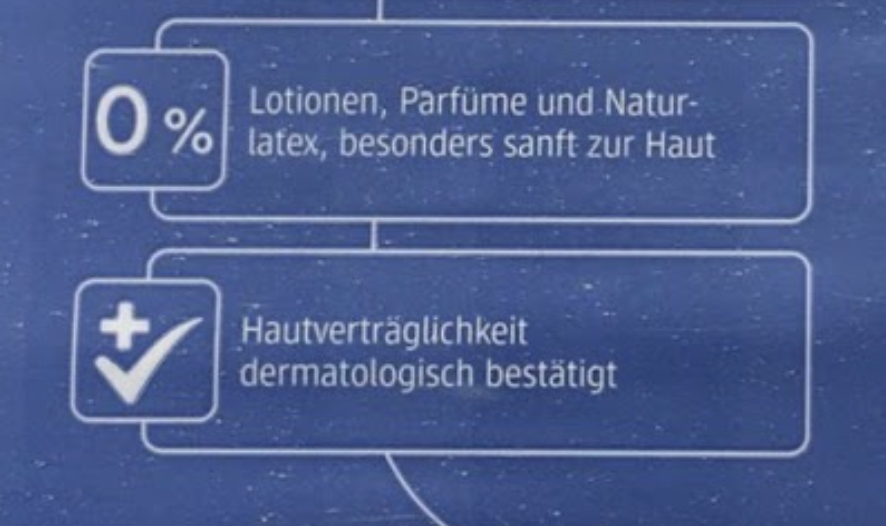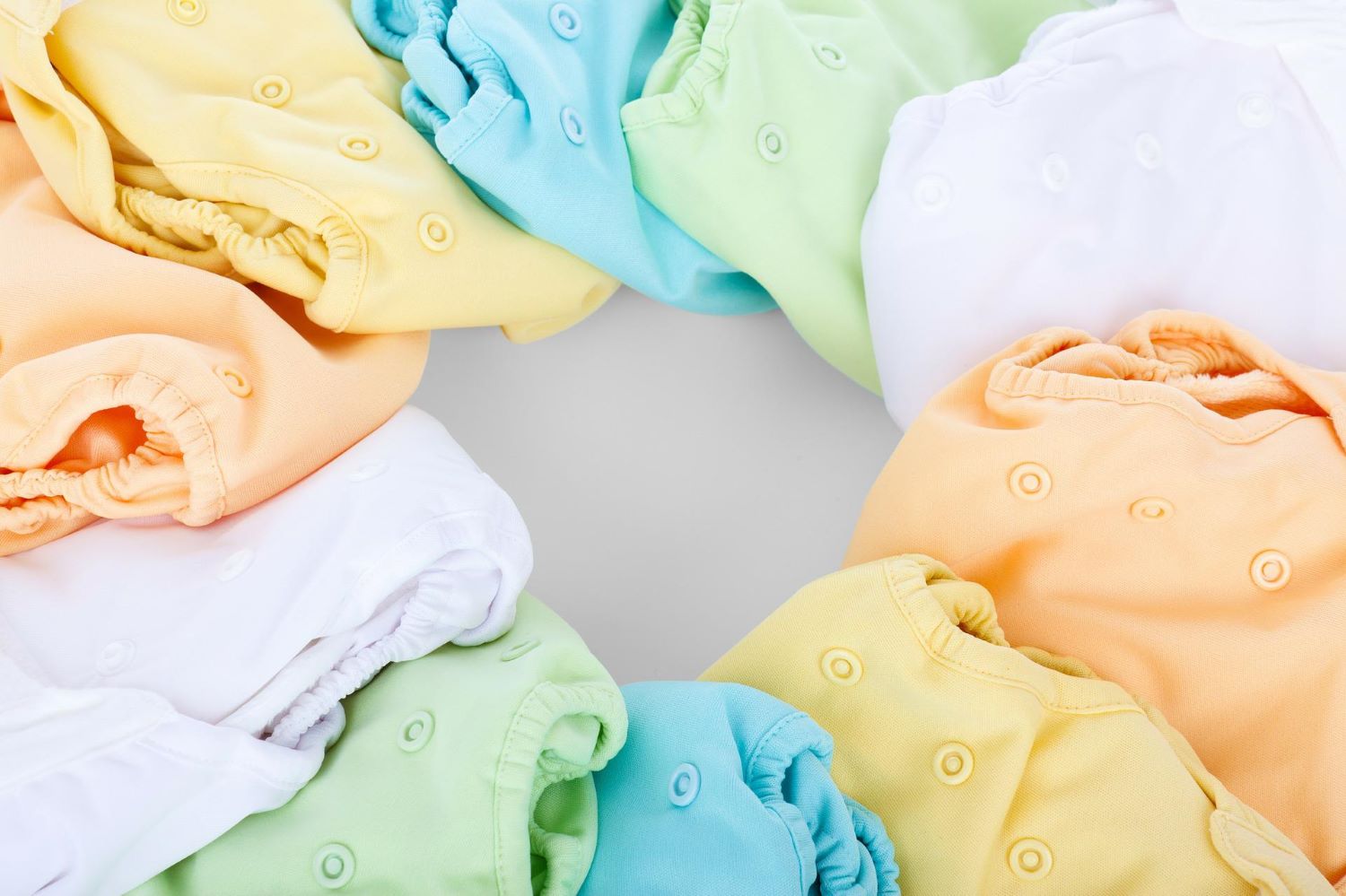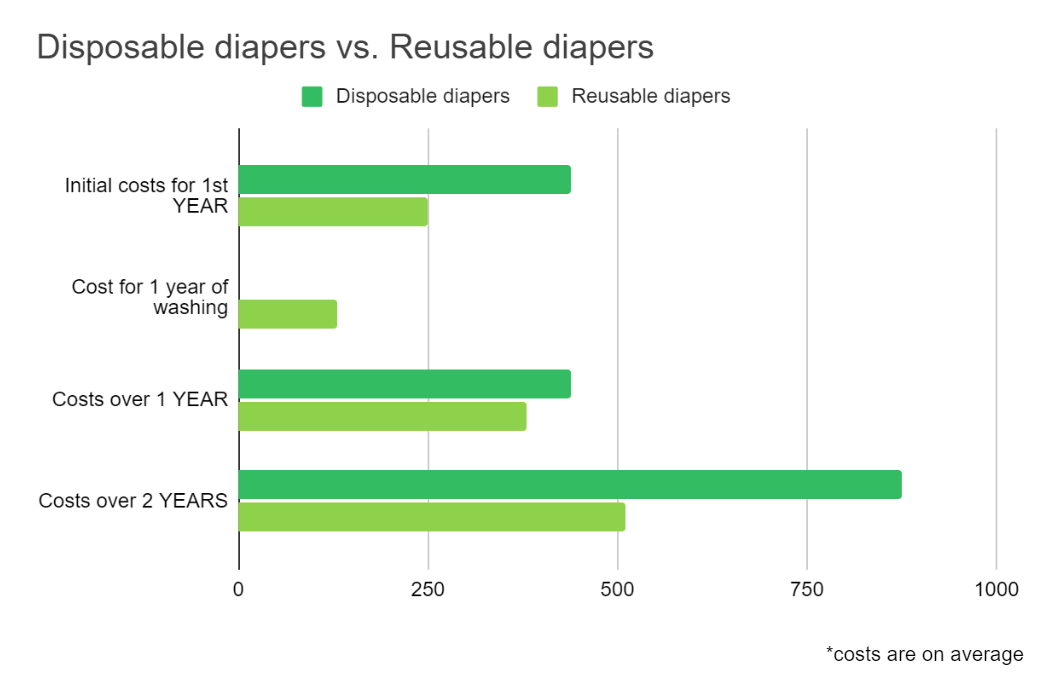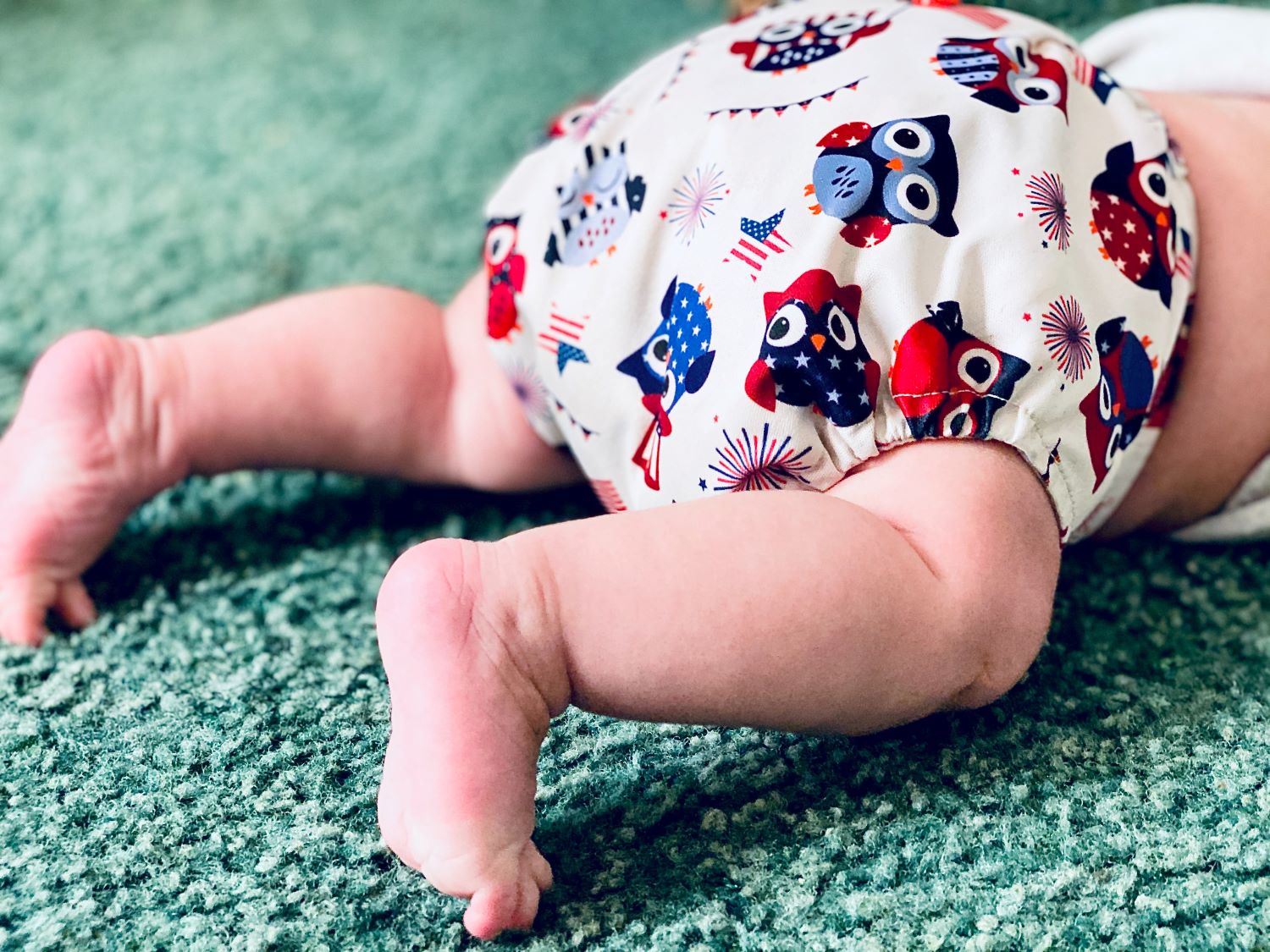In 2020, ANSES, the French Agency for Food, Environmental and Occupational Health & Safety made a proposal to restrict hazardous chemicals from single-use babies’ diapers throughout the EU [1]. Wait! What? Hazardous chemicals in babies’ diapers?
Diapers have become such a necessity that we often don’t question what we are putting on our baby 24/7 for a couple of years – and this might be a problem! Even though it is not often spoken of, single-use diapers can contain several chemicals proven to be dangerous to human health, from carcinogens to hormone disruptors.
“Diapers have become such a necessity that we often don’t question what we are putting on our baby 24/7 for a couple of years – and this might be a problem!”

Picture source: pixabay.com
From reusable to disposable
In the past, diapers were made of natural materials such as animal skins or different kinds of leaves. The first cloth diaper was invented in 1887 and from then on, as it is in our human nature, we kept advancing it to accompany our busy lifestyles and ta-da here comes 1942 and the first disposable diaper [2]!
Having such a convenient product on hand must have been a game changer for parents. However, convenience does usually come with a price and this time it is a price the environment has to pay. 92% of all disposable diapers will eventually end up being buried in landfills, while being the third-largest single consumer item found in these dumping grounds [3].
To put this into perspective, an average baby uses about 6000 diapers during their first two years of life, and this is just one baby out of millions [3]!
“An average baby uses about 6000 diapers during their first two years of life, and this is just one baby out of millions!”
Unfortunately, like many other products, it’s not just the after-use waste that’s concerning, but also the overall production process. Disposable diapers use 2.3 times more water than cloth and 20 times more raw materials, like petroleum and wood pulp [3].
And what about the toxic chemicals inside disposable diapers?
When it comes to chemical content, it is necessary to be very careful when selecting diapers, as they will be touching your baby’s skin for the next few years. However, a lot of time, manufacturers of disposable diapers don’t disclose what exactly is in their diapers.
Very rarely the ingredient list on the packaging includes all ingredients, sometimes there is no ingredient list at all! We have to invest our own time and search for the full list of ingredients online and even then we might not be lucky. This is also why we should not completely trust the producers.
Often producers only mention that their diapers are “free from” something, or will only state key ingredients but will not disclose the full list of ingredients. To obtain the full list is often an investigative piece of work.

Let me tell you everything they don’t! First and foremost, it is important to talk about the plastic polymers such as polypropylene and polyethylene that are covering a big part of the disposable diaper [4]. To increase the flexibility of the plastic polymers, a class of plasticizer chemicals called phthalates are added [4].
Phthalates are known “endocrine disrupting chemicals (EDCs)” that can damage the proper functioning of hormones and have a negative effect on human health, in this case children who are vulnerable to its exposure [5]. In a perfect world, phthalates would not be existent in diapers, but we don’t live in a perfect world and plastic always seems to find its way in.
On top of all the toxic plastic, some disposable diapers also undergo a paper-bleaching process that leaves traces of dioxin, which is likely a human carcinogen [5]. Plus all the chemicals from adhesives, perfumes and synthetic dyes that are released into the skin. Long-term exposure to some of these chemicals have been linked to kidney, liver and nervous system damage [4].
And then, there is the SAP, the super-absorbent polymer, that keeps the liquids inside the diaper. Often the chemicals used in SAP are not disclosed, many of them are pretty new and have not been rigorously tested [5].

Picture source: pixabay.com
I am sorry to say but the list goes on and on. Yikes! When you think about it, it is pretty horrifying what the diaper manufacturers let us put on our babies. -> 10 Worst Ingredients in Hygienic Products
So… what can we, parents, do differently?
It is first important to realize that contributing to the global waste issue means contributing to some big environmental problems that are already arising and will continue to taunt us. So if you want the best for your kids and their future, take care of the environment as they go hand in hand. Once this realization kicks in, it is time to kick these toxic disposable products out of the way.
I know that it seems like going back to the past, but reusable diapers really deserve a try and it is not such a surprise that they are making a big come-back. They are so much healthier, more eco-friendly and also cheaper!
“They are so much healthier, more eco-friendly and also cheaper!”

Persuaded? Great! Let’s start…
You might be surprised, but there has been quite some development in the cloth diaper industry. They are much more simple to use, comfortable, pretty and stylish.

Picture source: unsplash.com
There are already so many options on the market. It can be overwhelming trying to decide, as well as, the initial investment might seem rather high, since it is not spread over time as with disposable diapers.
Luckily, some companies have thought about this and are offering a reusable diaper trial package. A trial package can be rented for a month and includes different types of cloth diapers that you can try. This way parents can choose which type is most comfortable for them to use and don’t have to spend big amounts of money for something that doesn’t work well for them.
Also a good thing is to ask around! Maybe some of your relatives or friends have some experience or even have diapers to pass to you. Trust me they last long! I got mine from my aunt, my daughter was the 3rd child to use them and they are still like new.
Let’s see if you can get as excited as my friend Lidka:
Most parents are looking forward to finishing diapering their child. For me, it was a pretty sad moment, despite the happiness that my daughter is making a new step. Why? Shortly, because I love our diapers.
When I was pregnant, we decided with my partner to be as sustainable as we could. I researched literally the whole internet to know about all the possible cloth diapers and gadgets involved.
When our daughter was born I had an idea to try the “diaper free” movement for a while, but my daughter was crying a lot because of colics and she wasn’t happy to be undressed every now and then.
So we decided to stick to the first idea. We had a nice collection of cloth diapers and inserts waiting for her in different sizes. All in one, hybrids, pockets, prefolds, all in two, cotton, synthetic, wool. Most of the things we got from our friends or on the sales across the internet. I had a poster on the wall that I drew for my partner, to know what diaper is going with which insert. A huge mess!
Our daughter hated the feeling of a wet diaper. There are kids who don’t mind having it wet for a while. We were not the lucky ones here. And we had to find a unique system that was easy for my partner and me. Something that would dry fast, we could change quickly and we wouldn’t spend a fortune plus as natural as possible as our daughter had super sensitive skin.
The answer was: Recycle wool diapers also known as wool covers.
Wool is breathing, transferring all the moisture away from the child and keeping it in a comfortable warmth, just like a good wool sweater. The diaper is covered with lanolin (natural fat from sheep’s wool), which is waterproof and has antibacterial properties.
You don’t have to wash it every single time, after removing the cotton/hemp insert, it’s enough to hang it outside in the sun and wind for a while. Insert is going to the washing machine for a “prewash”. The wool diaper covers, I used to wash once per month and then I followed the process of lanolizing. In the beginning it looks complicated but after a while you are doing it automatically.
Poop you are removing to the toilet from the insert. More sensitive parents are using paper/silk inserts possible to throw away together with the bigger surprise. Less work with prewashing.
And no, it doesn’t smell bad. You are removing used inserts. Diapers from a supermarket smell really strong because of all the chemicals and plastic that contained it. And big brand disposable diapers are for not changing even for 10 hours. Just imagine what is happening inside…
New wool diapers are pretty expensive, but you need fewer of them than any other kind. In Poland, I found people who were sewing diapers from merino sweaters from second hand. Gorgeous idea! And all of them are different and beautiful. Some of the tailors can sew a diaper with an application you wish to have.
I ordered wool leggings for sleeping, when our daughter was bigger and still couldn’t hold pee at night. Leggings are just waterproof, so inside you can put a fitted diaper, made entirely of cotton and ready for a heavy wet night or just a nap. Child can move freely and you don’t have any “leaks” – nightmare of a cloth diapering parent.
So to use wool covers you need to be patient to learn a few new things and to be in love with natural materials. And please, look for wool diapers made from recycled materials. You will support small craftsmans businesses and you will have beautifully designed eco diapers.


0 Comments